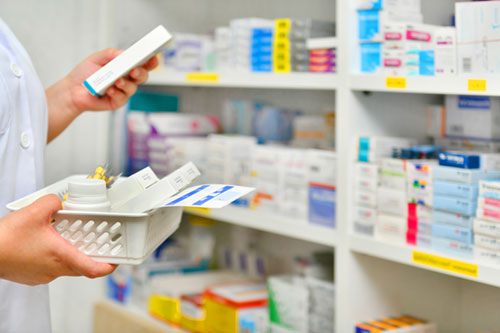Sedentary lifestyle habits are leading us towards the usage of enormous drugs, and as a result, various health mishaps are hitting us badly. While getting into the world of modern science that has given birth to many new chemical molecules, each with its own pros and cons, the very first thing that every individual should bear in mind is this key mantra – PREVENT THE WORST, PUT MEDICATION SAFETY FIRST.

This platform serves as a tool for getting a better understanding about the most common class of drugs that we take for granted but which are the ones possessing harmful adverse effects when used in an unsafe manner. Schedule H & H1 are a category of prescription drugs in India that are listed as an appendix to The Drug and Cosmetics Rules, 1945. Without a doctor’s prescription, these drugs cannot be bought.
Drugs under Schedule H & H1
| SCHEDULE H DRUGS | SCHEDULE H1 DRUGS |
| Alprazolam | Alprazolam |
| Cefdinir | Balofloxacin |
| Cefepime Hydrochloride | Buprenorphine |
| Cefetamet pivoxil | Capreomycin |
| Cefpirome | Cefdinir |
| Cefpodoxime proxetil | Cefditoren |
| Ceftazidime pentahydrate B | Cefepime |
| Ceftizoxime Sodium | Cefetamet |
| Chlordiazepoxide | Cefixime |
| Clofazimine | Cefoperazone |
| Codeine | Cefpirome |
| Diazepam | Cefpodoxime |
| Diphenoxylate and its salts | Ceftazidime |
| Ethambutol Hydrochloride 1S. | Ceftibuten |
| Ethionamide | Ceftizoxime |
| Levofloxacin | Ceftriaxone |
| Meropenem | Chlordiazepoxide |
| Midazolam | Clofazimine |
| Moxifloxacin | Codeine |
| Nitrazepam | Cycloserine |
| Pentazocine | iphenoxylate |
| Pyrazinamide | Doripenem |
| Sparfloxacin | Ertapenem |
| Thiacetazone | Ethambutol HCl |
| Tramadol hydrochloride | Ethionamide |
| Zolpidem | Faropenem |
| Gemifloxacin | |
| Imipenem | |
| Isoniazid | |
| Levofloxacin | |
| Meropenem | |
| Midazolam | |
| Moxifloxacin | |
| Pentazocine | |
| Prulifloxacin | |
| Pyrazinamide | |
| Rifabutin | |
| Rifampicin | |
| Sodium Para-aminosalicylate | |
| Sparfloxacin | |
| Thiacetazone | |
| Tramadol |
Drugs specified in schedule H & H1 come under The Narcotic Drugs and Psychotropic Substances Act, labelled with the symbol RX. H1 drugs are basically the antibiotics that have been separated to check their abuse and appropriate use. These are labelled as RX in red on the left corner of the label.
All these drugs which we get from the pharmacy outlet without proper consultation lead to life-threatening consequences on acute or chronic usage as they possess potential side-effects that impact our bodies when used inappropriately.
This class of drugs however shows no limitations when used for topical or external use such as for ear, eye or nasal preparations. Just a simple gazette notification will not stop their usage without doctor’s guidance – extra measures at various levels will also be needed.
- Inspecting sales of over-the-counter drugs.
- Launching appropriate antibiotic & psychotropic policies in a health care facility.
- Making people understand antibiotic & OTC medicines usage in medical set-up.
- Repeated checking in pharmacies.
- Patient counselling while dispensing medicines by a healthcare professional on its effects and therapeutic efficacy.
Above all, guiding patients and involving them in the treatment process will promote safe medicine usage. This will also avoid any complications that may arise due to indiscriminate drug usage.
Hence, it is the responsibility of every individual to take a break and look into the potential side-effects of inappropriate self-medication practices as negligence could even cost a life. All these could be achieved by having proper patient counselling that can improve the quality of life of a person.
SAFETY ISN’T EXPENSIVE, IT’S PRICELESS.

Dr. C. Keerthana Sushmi
Clinical Pharmacist (Clinical Pharmacology)
Kauvery Hospital Chennai

